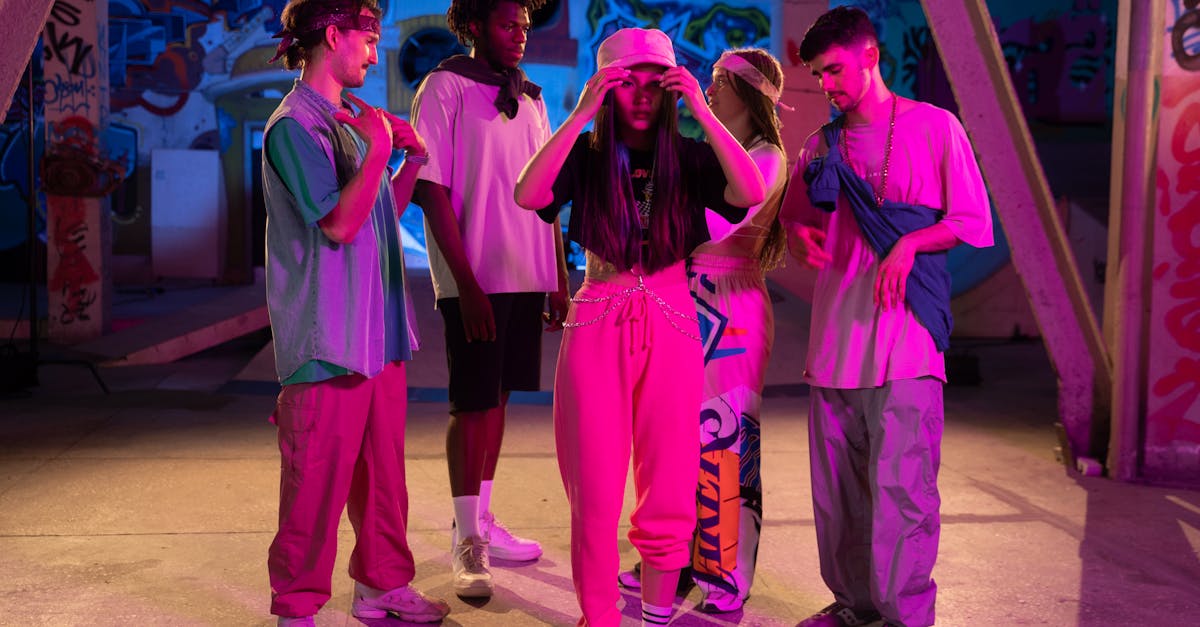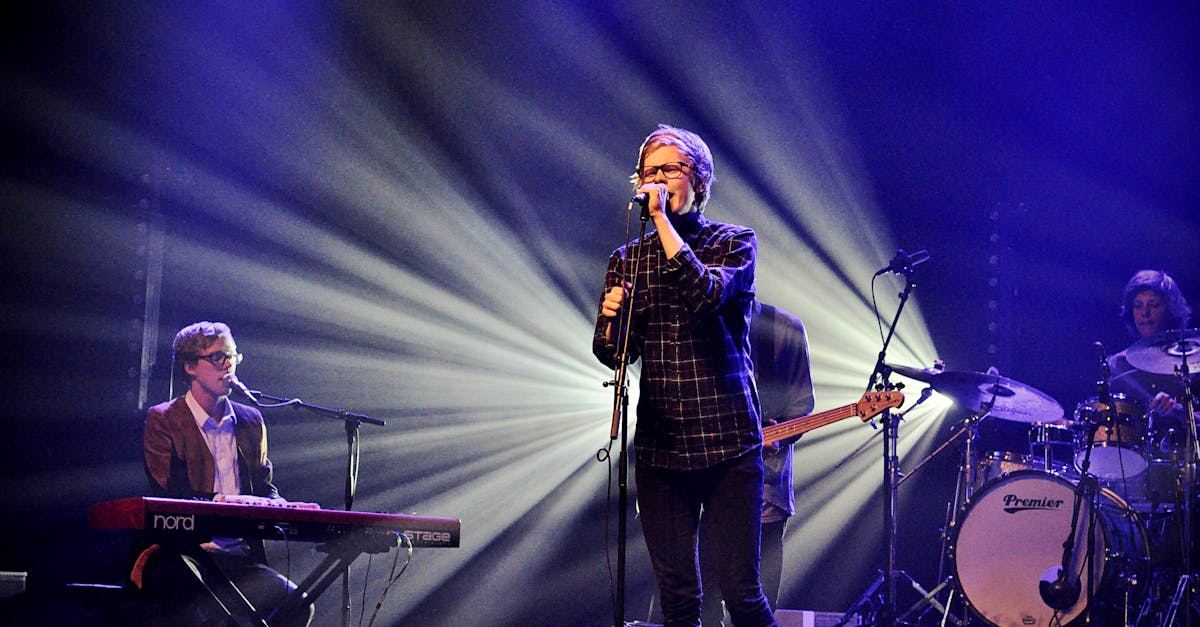Decoding the Urban Groove Spectrum
Introduction
Cities serve as melting pots of culture, giving birth to diverse soundscapes that shape our daily lives. The Urban Groove Spectrum is a tapestry of genres and influences, blending history, tradition, and innovation. Spanning from hip-hop and R&B to electronic dance music and beyond, these urban sounds are more than just auditory experiences—they reflect the heartbeat of diverse communities. Urban music not only entertains but also interweaves sociopolitical messages, making it a powerful tool for cultural expression. In today's globalized world, these genres transcend borders, impacting lifestyles and identities. But what defines this vibrant spectrum, and how has it evolved over time?
Advertisement
The Origins of Urban Music
Urban music finds its roots in the socioeconomically marginalized neighborhoods of major cities. The post-war boom in the 1950s saw a migration to urban centers, creating densely populated areas rich in cultural diversity. These burgeoning cities became the cradle of new musical genres such as blues, jazz, and rhythm and blues (R&B). Over time, these styles evolved through musical fusion, influenced by rock, pop, and gospel. By the late 20th century, urban music emerged more prominently, with genres like hip-hop and funk finding voice on the streets, reflecting the daily struggles and celebrations of urban life. The rich history of this genre is a testament to its resilience and adaptability.
Advertisement
The Rise of Hip-Hop and Rap
Hip-hop, born in the Bronx in the 1970s, revolutionized the music industry by introducing rap as a mainstream genre. Emerging from block parties and basement gatherings, it embodied the urban youth's street culture. Art forms like graffiti, breakdancing, and DJing accompanied the dominant beats, creating a multifaceted movement. Artists like The Sugarhill Gang and Grandmaster Flash became pioneers, setting the stage for a colossal genre that would influence fashion, language, and attitudes worldwide. With its intricate wordplay and compelling narratives, hip-hop doubled as a storytelling platform, addressing themes of identity, poverty, and empowerment. Its global influence today spans continents and cultures.
Advertisement
Electronic Dance Music and its Urban Roots
Electronic Dance Music (EDM) traces its origins to 1980s Chicago and Detroit, cities revered for their underground club scenes. House and techno, rooted in these urban environments, quickly became the backbone of dance music worldwide. The DJ world thrived, with cities like New York and London becoming hubs for electronic innovation. As urban spaces continue to inspire producers and DJs, EDM remains a pivotal aspect of the city nightlife, weaving electronic beats with elements of pop, rock, and traditional music. Festivals and events have resurrected this genre, proving its versatility and universality. Ultimately, EDM remains a testament to urban music's ever-evolving landscape.
Advertisement
R&B and its Evolution
Rhythm and Blues (R&B) are intrinsic to urban music's fabric, evolving from the deep South and catapulting into mainstream success. Initially celebrated as a sedate, emotional counterpart to the high-energy beats of funk and hip-hop, R&B soon embraced a range of influences, including jazz and electronic elements. Artists like Marvin Gaye and Aretha Franklin brought soul-stirring performances that highlighted struggles with love and social justice within urban life. Today, R&B has metamorphosed to embrace diverse narratives, with artists like Beyonce and Frank Ocean expanding its boundaries. The genre's adaptability and emotional depth resonate with audiences, earning a cherished place in urban soundtracks.
Advertisement
The Impact of Globalization
With globalization, the Urban Groove Spectrum has become ever more interconnected. As cities bridge cultural divides, music genres continually incorporate international influences, resulting in fascinating hybrid forms. Urban music, fueled by the internet and streaming platforms, dissolves borders, presenting varied narratives across cultures. British grime, rooted in London, showcases this trend, as does Reggaeton, a fusion born in the Spanish-speaking Caribbean, conquering global charts. Exposure to different cultures, languages, and traditions broadens the appeal and authenticity of urban music. This interaction encourages global artistry collaboration, creating expanding spaces for cultural exchange and mutual appreciation.
Advertisement
The Role of Technology
Technological advances undeniably shape the Urban Groove Spectrum, offering an expansive canvas for artistic expression. Home studios, sophisticated production tools, and digital platforms democratize music creation. Urban artists, irrespective of financial resources, can produce high-quality music, promote it online, and connect with audiences worldwide. DJs now blur sound boundaries, mixing genres through software, enhancing live performances with mesmerizing visual effects. Meanwhile, music apps and social media platforms invite fans into the creative process, enhancing their engagement with artists. This symbiotic relationship between technology and urban music continues to fuel the growth of innovative styles and practices.
Advertisement
Sociopolitical Influence and Expression
Urban music serves as a mirror, reflecting the emotional landscape of its creators and listeners. Rooted in cities marked by a dynamic mix of cultures and challenges, urban music engages deeply with societal issues. From addressing racial injustice and inequality to advocating for more inclusive narratives, urban artists amplify marginalized voices. The use of music as a protest tool is well-documented, with anthems like Public Enemy's "Fight the Power" lighting cultural fires. Modern pioneers like Kendrick Lamar continue this tradition, inspiring activism through evocative lyrics. In urban music, the line between entertainment and political commentary blurs, safeguarding its status as a catalyst for change.
Advertisement
Future Directions for Urban Music
The future of urban music seems promising as it continues to evolve with artists reimagining past sounds and pushing creative boundaries. Expect further intersections between urban music and virtual reality, offering immersive experiences that engage more senses. Collaborations between genres could bear innovative results, while nascent social movements will find expression through rhythm and harmony. With greater access to technology, urban music becomes more inclusive, empowering underrepresented artists to share their unique perspectives. As cities grow, so too will their soundscapes, ensuring a vibrant, eclectic future for urban music, where its beat resonates deeply with both local and global audiences.
Advertisement
Conclusion
The Urban Groove Spectrum is a dynamic and ever-changing force in the music world. Originating from marginalized communities, it has become a powerful voice for diversity and resilience. Through integration with global influences and technological advancements, urban music continues to captivate and inspire. Its capacity to unite differing cultures and foster dialogue ensures its lasting impact on society. As long as urban environments thrive, their music will evolve, offering innovative sounds and compelling narratives that leave a lasting imprint on cultural consciousness.
Advertisement





